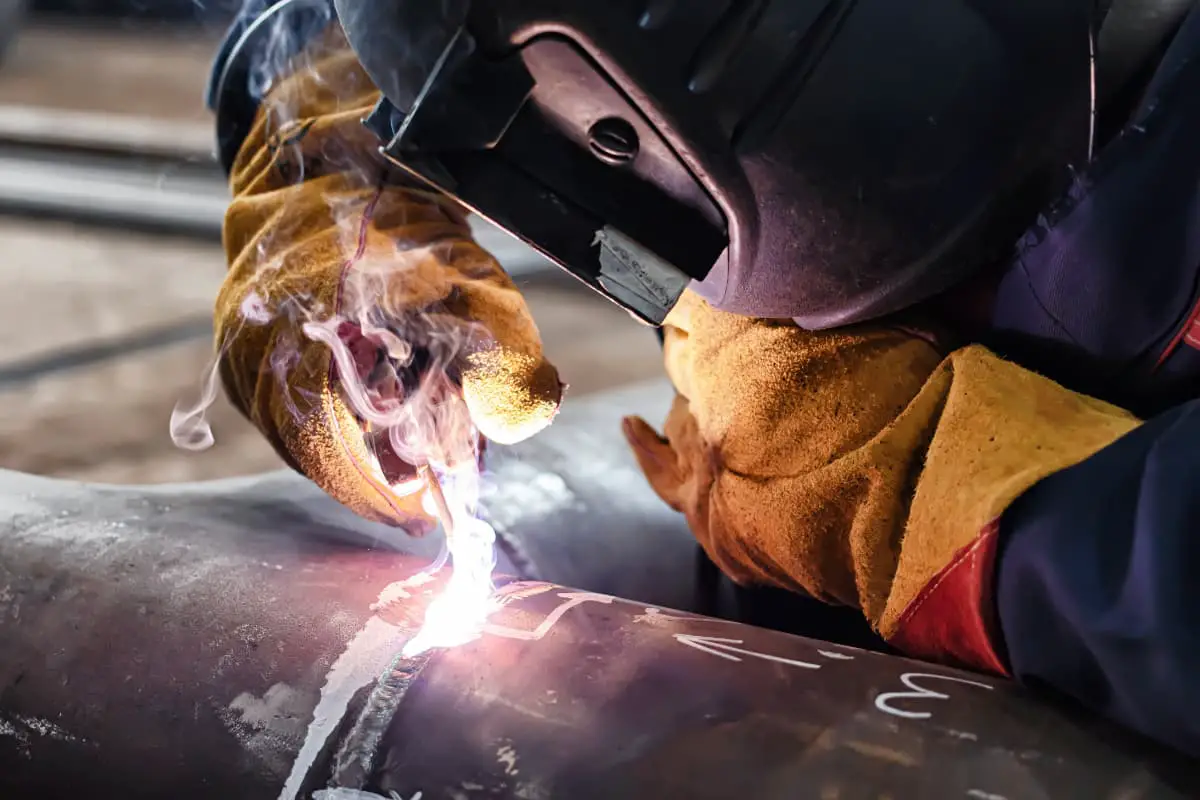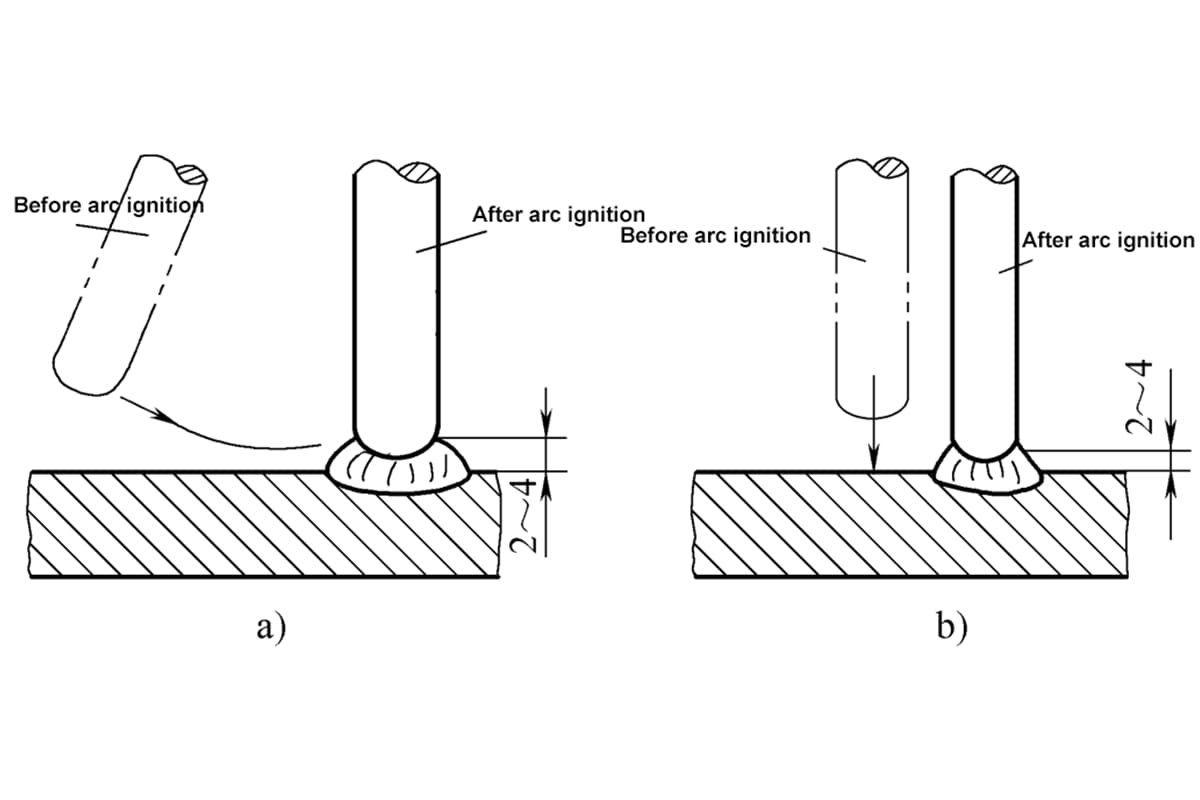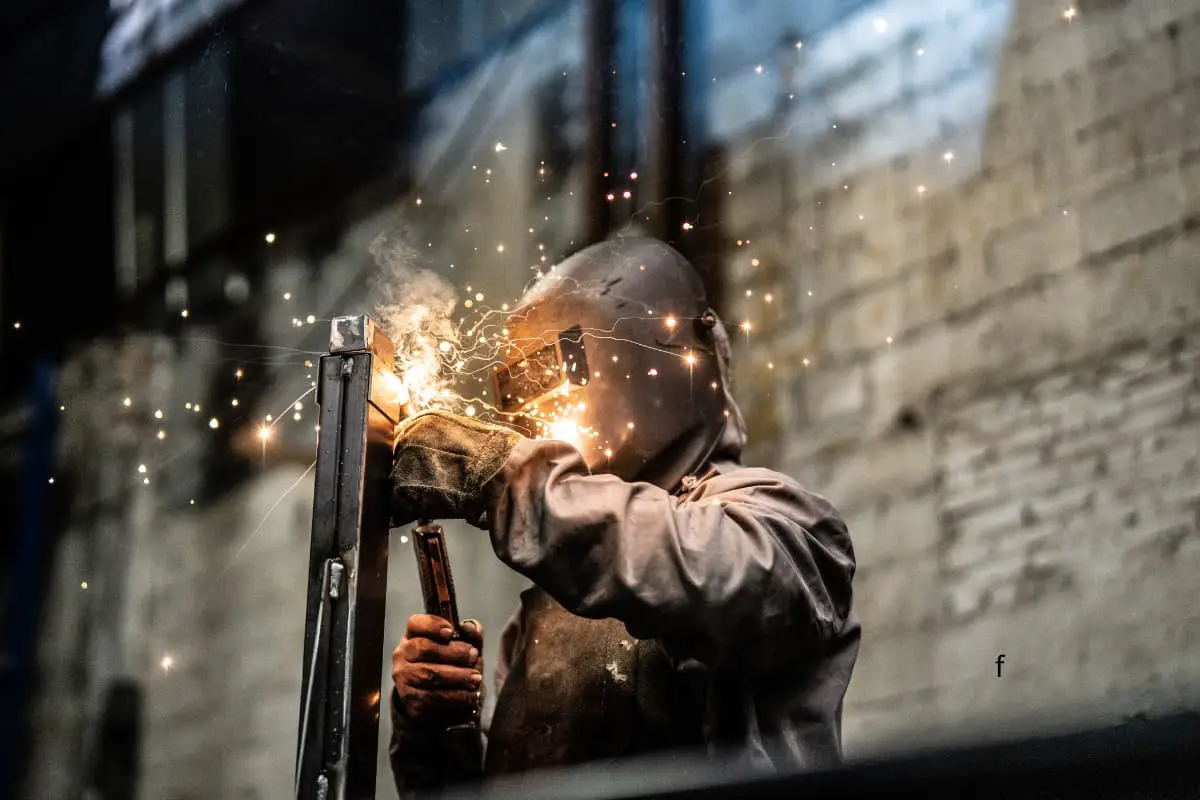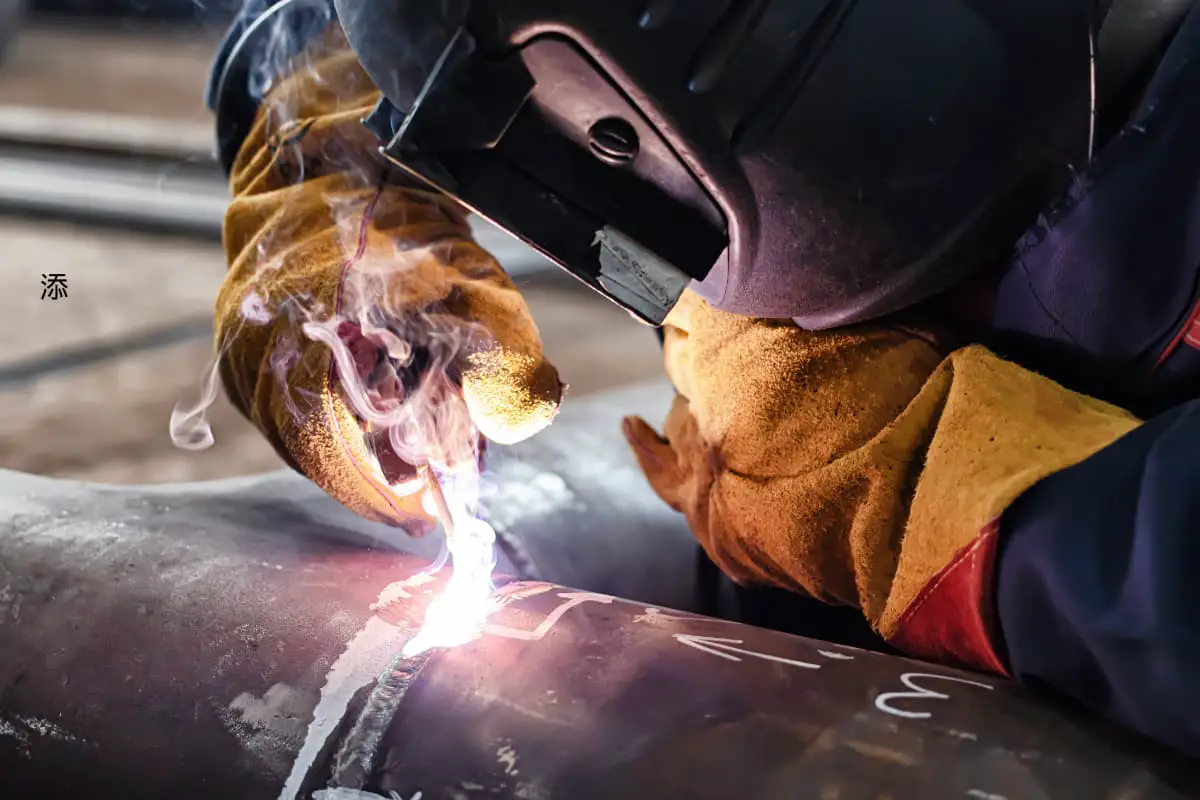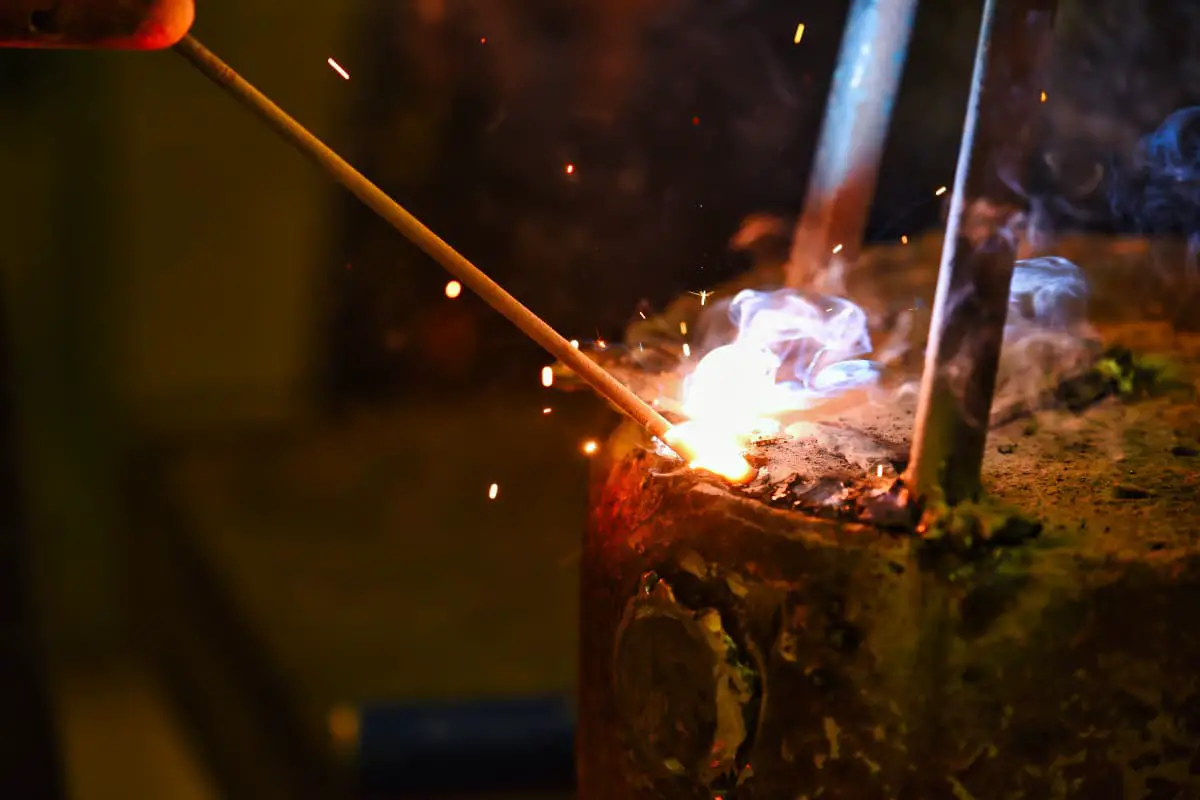
Welding is one of the thermal processing methods for metals. Especially when welding common low-alloy structural steels and thick plates with high carbon content, the local metal is affected by the welding thermal cycle of high temperature heating and cooling, causing various changes in the internal structure of the metal, which directly affects the mechanical properties of the weld joint.
Additionally, due to welding metallurgical conditions and the effects of different heating and cooling rates, the structure of the weld and heat-affected zone is uneven, which also indirectly and directly affects the mechanical properties of the weld joint. Therefore, it is very necessary to change or improve the mechanical properties of the weld joint by heating, heat preservation, and controlling the cooling rate locally or entirely before, during, and after welding.
I. Preheating before welding
1. The role of preheating
1) Preheating is an effective measure to prevent cold cracks, hot cracks, and the formation of hardened structures in the heat-affected zone. When welding high-carbon steel, low-alloy steel, heat-resistant steel, and ordinary low-carbon steel components with high rigidity, the fast cooling rate of the weld can easily lead to the formation of hardened structures in the weld and heat-affected zone, thus causing cracks. Therefore, preheating of the weldment is necessary. Preheating can achieve the purpose of slowing down the cooling rate, which can prevent the formation of cracks in the weld.
2) When welding joints with high restraint, rapid cooling and heating can cause shrinkage stress in the joint area, leading to cracks. Preheating the joint area before welding can reduce shrinkage stress and prevent the formation of cracks.
3) When welding in colder regions, to prevent the formation of cracks, even low-carbon steel with a thickness exceeding 20m must be preheated.
4) Preheating can also remove oil, moisture, and other factors affecting weld quality, and it can promote the escape of hydrogen in the weld, thus playing a corresponding role in preventing defects such as porosity and also preventing the formation of cracks.
Preheat Temperature
To properly preheat the workpiece, it is mainly necessary to determine different preheat temperatures according to different metal materials. For example, for carbon steel, the preheat temperature is generally determined based on its carbon content. If the mass fraction of carbon is greater than 0.2%, the preheat temperature is 100~200°C; as the carbon content increases, the preheat temperature should also increase proportionally. Other materials also have different preheat temperatures depending on the material.
The welding preheat temperatures for commonly used steel grades are shown in Table 2-30.
Table 2-30 Welding Preheat Temperatures for Some Steel Grades
| Steel Grade | Thickness range/mm | Minimum preheat temperature/℃ | Remarks |
| Q235, Q245R, 25, ZG25 | ≤25 | >5 | Positioning welds and structures with high rigidity should increase by 50°C |
| 25~50 | >40 | ||
| 50 ~100 | ≥100 | ||
| Q345、Q345R | ≤25 | >5 | |
| 25~50 | >100 | ||
| 50 ~100 | >150 | ||
| 20MnMo | ≤12 | >5 | |
| 12~25 | >40 | ||
| 25~50 | ≥100 | ||
| 50 ~100 | ≥150 | ||
| 15CrMo, 12Cr1MoV | ≤25 | ≥150 | |
| 25 ~100 | ≥200 | ||
| 18MnMoNb, 20MnMoNb | 25~50 | ≥150 | |
| 50 ~100 | ≥200 | ||
| ZG15Cr1Mo1V | ≤25 | ≥250 | |
| 25 ~100 | ≥300 | ||
| ZG20CrMo | 12~25 | ≥250 | |
| 25~50 | ≥300 |
Preheat Methods
There are many preheating methods: such as flame heating, power frequency induction heating, far infrared heating, furnace heating, etc. The preheating method should be chosen based on the heating range. Currently, far infrared heaters are widely used, providing good heating effects and a large heating range.
Generally, the preheating width on each side of the welded joint should be no less than 5 times the thickness of the plate, and a uniform heating zone should be maintained 75~100mm on both sides of the bevel. The final preheat temperature must be determined through process testing.
Interlayer Insulation
In welding construction, especially during multi-layer welding, certain steels require maintaining a specific temperature during each layer of welding, known as the interlayer temperature. The role of interlayer temperature is similar to preheating, promoting the diffusion and escape of hydrogen in the weld and heat-affected zone, and it plays a role in preventing cold cracking.
For carbon steel, low alloy steel, and heat-resistant steel, the lower limit of the interlayer temperature is generally the preheating temperature of the weldment, and the upper limit is generally 350~400°C; for austenitic stainless steel, the interlayer temperature is generally controlled lower, usually less than 250°C.
It should be noted that preheating and interlayer temperatures should not be too high, otherwise it will cause changes in the microstructure and properties of some steel weld joints.
Post-weld heat treatment
Immediately placing the just-welded weldment into asbestos ash, hot sand (lime), or cooling with the furnace to slowly cool the weld joint, aims to reduce internal stress, minimize deformation, and prevent cracking. For weldments with a high tendency for quenching and high rigidity, post-weld cooling is an important technological measure to ensure welding quality.
Post-heating, hydrogen release treatment
“Post-heating” is maintaining the weld joint at a temperature equal to or higher than the interlayer temperature for a certain period after all welding operations are completed. The heating temperature and duration of “post-heating” depend on the thickness of the weldment, the type of joint, the initial hydrogen content in the weld, and the sensitivity of the steel to hydrogen cracking.
Generally, the temperature for post-heating is 250~350°C, and the holding time depends on the thickness of the weldment, generally 1~3 hours. For some low-alloy high-strength steel thick-walled vessels, using post-heating at 300~350°C for 1 hour can completely avoid delayed cracking and reduce the preheating temperature by 50°C. Post-heating can accelerate the diffusion and escape of hydrogen, hence it is also called “hydrogen release treatment.”
The main purpose of post-heating is to accelerate the diffusion and escape of hydrogen, avoiding the occurrence of delayed cracking. When preheating, interlayer temperature, and other measures cannot ultimately eliminate delayed cracking, post-heating is a simple, feasible, and effective method. Post-heating is mainly used for welding structures of high-strength low-alloy steel.
Post-heating has many similarities with post-weld heat treatment, but generally, post-heating cannot replace post-weld heat treatment. For weldments that require post-weld heat treatment and can immediately undergo post-weld heat treatment after welding, post-heating can be omitted. If post-weld heat treatment cannot be immediately performed after welding, and the weldment must be dehydrogenated in a timely manner, then post-heating cannot be omitted.
For example, there is a large high-pressure vessel that passed the post-weld flaw detection inspection, but because it was not heat-treated in time after welding, and no hydrogen elimination treatment was conducted, delayed cracking occurred during storage. When the vessel was heat-treated and underwent a hydrostatic test, the test pressure did not reach the design working pressure, and the vessel suffered a severe brittle fracture accident, resulting in the scrapping of the entire vessel.
The heating method, heating zone width, and temperature measurement location requirements for post-heating are the same as for preheating. Local post-heating should also maintain a uniform heating zone of 75~100mm on both sides of the bevel, similar to preheating. Quenched and tempered steels should prevent local overheating beyond the tempering temperature.
Post-weld heat treatment
Heat treatment is a process that improves the internal structure of solid metals through heating, holding, and cooling, thereby obtaining the desired properties. Post-weld heat treatment of weld joints is to improve the structure and properties of the weld joints or to eliminate residual stresses. Common post-weld heat treatments include stress relief annealing, normalizing, normalizing plus tempering, and quenching plus tempering (tempering treatment).
The main purpose of post-weld heat treatment is to reduce residual stresses, increase structural stability, soften the hardened zone, promote hydrogen escape, enhance resistance to stress corrosion, and improve the plasticity, toughness, and high-temperature mechanical properties of the joint. Since stress relief is the primary function of post-weld heat treatment, it is commonly referred to as post-weld heat treatment.
Post-weld heat treatment is generally only required under special circumstances for important products. For some welded products, if the post-weld residual stress is not significant or if it is necessary to retain some residual stress (such as the post-weld residual stress of multi-layer vessel wrapped plates), post-weld heat treatment is not required. If there is no or only a small amount of hardened structure but still maintains certain plasticity and toughness, which does not cause adverse effects during operation, post-weld heat treatment is also not necessary.
Stress relief annealing
The heating temperature range for stress relief annealing is the same as that for high-temperature tempering, generally heating the entire or part of the weldment to 550~650°C, followed by sufficient holding and slow cooling. The holding time for general steel is calculated as 2.5min per 1mm thickness, but not less than 15min. For thicknesses over 50mm, add 15min for every additional 25mm.
Overall heat treatment
Placing the weldment in a heating furnace for overall heat treatment can achieve satisfactory results. The temperature of the weldment when entering and exiting the furnace should be below 300°C. The heating and cooling rates should be related to the plate thickness and should meet the following requirements:
In the formula, U is the cooling rate, °C/h; δ is the plate thickness, mm.
For thick-walled vessels, the heating and cooling rates are 50~150°C/h, and the maximum temperature difference inside the furnace during overall heat treatment should not exceed 50°C. If the weldment is too long and needs to be heat treated in two sessions, the overlapping heating part should be more than 1.5m.
Local heat treatment
For simple containers and pipes that are too long for overall heat treatment but have a regular shape, local heating treatment can be performed. During local heating treatment, ensure sufficient heating width on both sides of the weld. The heating width for the cylinder is related to the cylinder radius and wall thickness, and can be calculated using the following formula:
In the formula,
- B is the heating width of the cylinder, mm;
- R is the cylinder radius, mm;
- δ is the cylinder wall thickness, mm.
For example, for a cylindrical weld with a diameter of 1200mm and a wall thickness of 24mm, the heating width centered on the weld is calculated using the above formula. That is, during the local heat treatment of this cylindrical weld, the 600m range centered on the weld must be heated to the specified heat treatment temperature.
Common methods for local heat treatment include flame heating, infrared heating, and industrial frequency induction heating.
The following situations should consider stress relief annealing treatment: base metal with high strength grade, common low alloy steel with a tendency to delay cracking; pressure vessels and other welded structures operating under low temperature conditions, especially those used below the brittle transition temperature; components subjected to alternating loads requiring fatigue strength; large pressure vessels; welded structures requiring stress corrosion resistance and post-weld dimensional stability.
Stress relief annealing is generally carried out in a furnace, which can eliminate over 80% of the residual stress. Local stress relief annealing can basically achieve the same effect as overall stress relief annealing.
This heat treatment does not involve changes in the crystalline structure.
2. Normalizing or normalizing plus tempering
This post-weld heat treatment is generally suitable for electroslag welding structures to improve the structure and performance of the joints.
Normalizing involves heating the steel to above Ac3 , with a holding time calculated at 2min per 1mm thickness, but not less than 30min, then cooling in air after exiting the furnace. Since it is a recrystallization process, it can obtain a finer grain structure and improve mechanical properties.
Normalizing plus tempering is tempering after normalizing. The purpose of tempering is to eliminate the structural stress caused during the cooling process of normalizing, further improving the comprehensive performance of the steel or welded joints.
3. Quenching and tempering treatment
This post-weld heat treatment is suitable for quenched and tempered steel or other welded structures that require post-weld quenching and tempering treatment. After quenching and tempering, the steel or welded joints can achieve a good combination of strength and toughness in comprehensive mechanical properties.
Quenching is heating the steel to a critical point Ac1 or Ac3 plus 30~50°C, holding it for a period, and then rapidly cooling in water or oil to obtain a high-hardness structure.
Issues to be aware of in post-weld heat treatment
Solution treatment involves heating the weld joint to 1000~1050°C, allowing the carbides precipitated on the grain boundaries during the welding process to re-melt into the austenite, then rapidly cooling to fix the austenitic structure. Stabilization treatment involves heating the weld joint to 850~900°C, holding for 2 hours, then air cooling, allowing the chromium in the austenite grains to gradually diffuse to the grain boundaries, eliminating the chromium-depleted layer at the grain boundaries, thereby improving resistance to intergranular corrosion.
Both solution treatment and stabilization treatment are aimed at improving the resistance to intergranular corrosion of austenitic stainless steel weld joints.
Issues to be aware of in post-weld heat treatment are as follows.
- For low alloy steels containing a certain amount of V, Ti, or Nb, it is necessary to avoid prolonged holding at around 600°C, as this may lead to temper brittleness, where material strength increases while plasticity and toughness significantly decrease.
- Post-weld stress relief annealing should generally be 30~60°C lower than the tempering temperature of the base material.
- For some low alloy steel weld structures containing elements like Cr, Mo, V, Ti, Nb, care should be taken during stress relief annealing to prevent reheat cracking.
- During heat treatment, care must be taken to prevent structural deformation.
Tables 2-31 to 2-34 show the main parameters of some commonly used post-weld heat treatment specifications.
Table 2-31 Post-weld heat treatment (above 400°C) heating and cooling rates
| Thickness/mm | Maximum heating rate/(℃/h) | Maximum cooling rate/(℃/h) |
| ≤25 | 220 | 275 |
| >25 | 220 x25/thickness | 275×25/thickness |
Table 2-32 Thickness Range Requiring Stress Relief Annealing After Welding for Certain Steel Grades
| Steel Grade | Thickness range/mm | |
| Not preheated before welding | Preheat above 100℃ before welding | |
| Carbon steel | >34 | >38 |
| Q345(16Mn) | >30 | >34 |
| 15MnVR | >28 | >32 |
| 12CrMo | / | >16 |
| Other alloy steels | / | Any thickness |
Table 2-33 Post-Weld Stress Relief Annealing Temperatures for Selected Steel Grades
| Steel grade | Heating temperature/°C |
| Q235, 20g, 22g, 25, ZG25, Q345(16Mn), 16Mng, 16MnR | 600 ~650 |
| 15MnVg | 550~580 |
| 20MnMo | 600~650 |
| 15CrMo | 680 ~720 |
| 20MnMoNb | 580 ~620 |
| ZG20CrMo | 650 ~680 |
| 12CrlMoV | 710~750 |
| ZG15Cr1Mo1V | 720~760 |
Table 2-34 Common low-alloy steel post-weld heat treatment temperatures
| Steel grade | Plate thickness/mm | Post-weld heat treatment temperature① | |
| Arc welding | Electroslag welding | ||
| Q345(16Mn) 16MnXt 14MnNb | ≤40 | No heat treatment required or stress relief annealing at 600~650℃ | Normalizing at 900~930℃ Tempering at 600~650℃ |
| >40 | |||
| Q390(15MnV) Q390 (15MnTi) 14MnMoNb | ≤32 | No heat treatment required or stress relief annealing at 560~590℃, 630~650℃ | Normalizing at 950~980℃ Tempering at 560~590℃ or 630~650℃ |
| >32 | |||
| 18 MnMoNb 14MnMoV | / | Stress relief annealing at 600~650℃ | Normalizing at 950~980℃ Tempering at 600~650℃ |
| 14MnMoNbB | / | Stress relief annealing at 600~630℃ | Tempering at 600~630℃ |
Post-weld heat treatment of different welded structures should be carried out in accordance with the relevant product manufacturing technical conditions.



